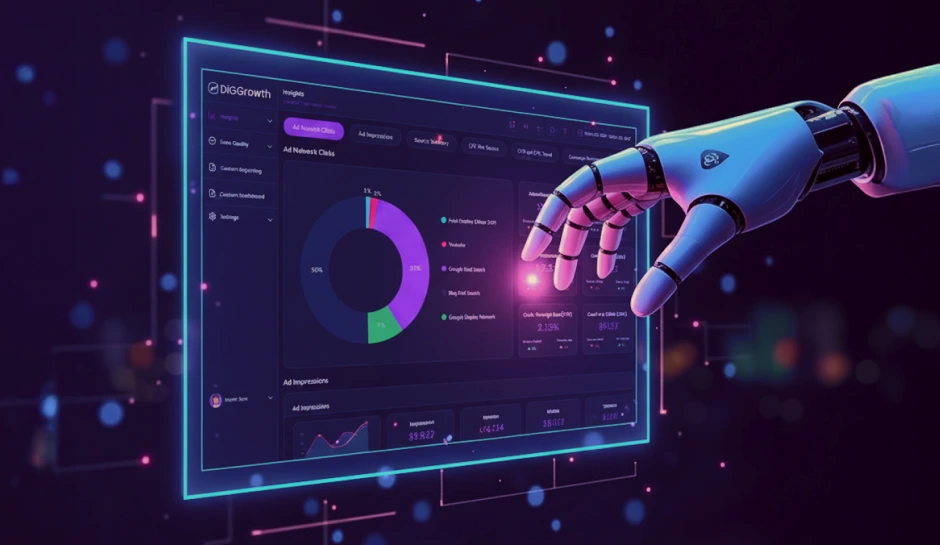
ABM Campaign Examples Every Marketer Must See In 2026
Explore ABM campaign examples that detail how leading brands approach account-based marketing. Learn about strategies including predictive analytics, content personalization, and multi-channel outreach that directly influence B2B decision-making.
Most marketers still fall into the same trap: casting a wide net and hoping the right prospects eventually swim in.
The result? Bloated lead lists, wasted ad spend, and sales teams frustrated with unqualified opportunities.
But, today the game has shifted.
You are no longer rewarded for volume but for precision.
Subtle layers of AI-driven insights are reshaping how you identify intent, predict readiness, and personalize every touchpoint. Instead of flooding inboxes with generic messaging, you now have the power to address the decision-maker’s current need directly, at scale.
But pause for a moment and ask yourself:
- How many of your campaigns actually reach the right people at the right time?
- How often do prospects feel like you truly understand their challenges before you sell to them?
- And how much pipeline is slipping away because your outreach looks like everyone else’s?
This is exactly where ABM proves its strength. It allows you to take the same resources you are already using, emails, ads, events, sales conversations, and channel them into a system that feels tailor-made for each account. That is why ABM campaign examples in 2026 stand out: they show how relevance can replace noise, and precision can replace guesswork.
The Big Shift: How ABM Looks Different in 2026

Earlier, many companies used Account-Based Marketing as nothing more than a checkbox exercise. Personalization meant adding a first name to an email, tweaking a headline, or pushing the same whitepaper to a “targeted list.”
Think of subject lines like: “Hi John, here is something you will love.”
On the surface, it looked like progress. But the reality was different. Buyers were not engaging. In fact, they could easily see through the shallow effort, and that disconnect showed up in poor conversions.
The coming years look different.
2025 has already marked a shift, and the trend signals that the future of ABM in 2026 will not resemble the old playbook.
Now you are no longer guessing who is ready to engage. AI-driven intent signals highlight when an account is actively researching, which platforms they use, and what type of content resonates. Instead of spraying out messages, you start with precision.
You are no longer working in silos either. Sales, marketing, and customer success align around the same accounts with the same insights, ensuring that every interaction, from a LinkedIn ad to a sales call, feels consistent and relevant.
And you are not chasing scale for the sake of numbers. You are scaling depth, building fewer but stronger connections that translate into faster cycles, higher conversions, and measurable revenue growth.
That is the real face of ABM in 2026.
Example 1: The Personalized Microsite Play
In Account-Based Marketing, personalization isn’t a “nice-to-have.” It’s the difference between standing out and being ignored.
Why Generic Landing Pages Fail
Here’s the hard truth: generic landing pages don’t convert well.
Your prospect clicks on an ad, excited to see something relevant. But the headline reads:
“See How Our Solutions Can Help Your Business Grow.”
That could be for anyone. SaaS, eCommerce, healthcare, even a local bakery. The page is so broad it ends up speaking to no one.
What happens?
- They feel it’s not relevant.
- They skim for a second, then exit.
That is the problem with one-size-fits-all messaging. It does not speak to the unique pain points of the visitor.
Why Personalization Wins
This is where personalized microsites change the game.
Growth Natives worked with a skincare brand that was facing the same problem. Their landing pages showcased every product, every routine, to every visitor.
But buyers wanted something different: a page that felt built just for them.
Instead of sending all visitors to one page, they segmented audiences and built personalized landing journeys:
- Acne-related ads led visitors to an acne-solution page with real testimonials.
- Anti-aging ads sent prospects to a landing page featuring research-driven serums.
- People looking for natural products arrived at a story-led page about organic ingredients.
Result:
Visitors spent more time on the page, engaged with the content, and converted better. Customers felt “understood” before they ever clicked buy.
That is the power of personalization done right.
How You Can Leverage Personalization in B2B ABM
Say you are targeting a mid-sized SaaS company with your marketing automation platform. Instead of sending them to a generic features page, here’s how you can leverage personalization effectively:
Customize the Greeting
Use their company name and logo right on the landing page.
Example: “Scaling campaigns across multiple regions is tough, especially for a fast-growing SaaS brand like [Company Name]. Here’s how you can save 15+ hours a week with automation.”
Show Relevant Case Studies
Showcase stories from other SaaS companies that faced similar challenges.
Highlight results like cost savings, improved speed to market, or simplified workflows.
Offer a Personalized Demo
Share a short video or demo that focuses on their exact pain point (e.g., managing campaigns across regions and time zones).
Position your platform as the only software that has solved this for companies like them.
End With a Clear CTA
Don’t leave users hanging after impressing them with personalized proof.
Use a direct, action-driven CTA such as:
“Book a 20-minute strategy session to see how [Company Name] can reduce campaign complexity starting next week.”
A call-to-action that feels exclusive and tailored will drive higher response rates than a generic “Request a demo” button.
When you do this, the experience completely changes. It doesn’t feel like you’re pitching another product.
It feels like you’ve built a solution just for them, which is exactly what makes decision-makers stop, pay attention, and take the next step.
Example 2: The Multi-Channel Drip That Follows Your Prospect Everywhere
If you are only sending emails, you are invisible where your prospects spend the rest of their time.
Here is the truth: people engage differently across platforms. Some scroll through LinkedIn between meetings. Others skim emails at night. Some notice a banner ad while reading industry news.
If your message only shows up once, it gets ignored. If it shows up everywhere, it becomes a story they cannot forget.
That is the difference between being another sales pitch and being the brand they remember.
You Need a Multi-Channel Drip Campaign
Your prospects do not live in silos. They jump from LinkedIn, to email, to podcasts, to blogs, and back again.
To capture their attention, your campaign needs to move with them. Dynamic. Versatile. Impossible to ignore.
A multi-channel drip does more than increase impressions. It creates a cohesive experience that:
- Reinforces your message at every step, until it sticks.
- Adapts to prospect behavior, so the right message lands at the right time.
- Builds trust gradually, without spamming or overwhelming.
- Turns casual scrollers into engaged leads through seamless touchpoints.
When done right, it feels less like marketing, and more like a guided conversation.
How DiGGrowth Put It Into Action
Remember, you do not want to spam your target audience. You want to surround them with value, everywhere they go.
This is exactly what DiGGrowth helped a SaaS company achieve. Instead of blasting disconnected campaigns, they designed a drip that flowed naturally across channels.
Impact: Prospects saw the brand at least five times in their buyer’s journey, not once. Instead of cold outreach, the campaign felt like a personalized conversation. Engagement rates doubled, and pipeline velocity shot up.
Now, imagine you are targeting a cybersecurity firm. Your drip could look like this:
- LinkedIn Ad: “90% of cyberattacks go undetected. Here is how CISOs are fighting back.
- Follow-Up Email: A case study showing how a similar company reduced incident response times by 40%.
- Retargeting Ad: “Get your personalized Cybersecurity Risk Report in 48 hours.
Pro Tip-You do not need an enterprise budget to get started. Begin with two or three channels and sync the messaging. When done right, you are not chasing prospects. You are building a relationship that follows them naturally until they are ready to buy.
Example 3: Hyper-Focused ABM Delivers Big Wins
Not every lead deserves your attention and that is the hard truth many marketers overlook. Hyper-targeted ABM is about resisting the temptation to cast a wide net and instead channeling all energy into a handful of accounts that matter most.
This approach demands deep research, personalization, and discipline. But when done right, it can completely shift the growth trajectory of a business.
Why Hyper-Targeting Works
Rather than spreading your team thin across dozens or hundreds of prospects, you concentrate resources on those with the highest likelihood of long-term value.
- Each account receives messaging tailored to its specific challenges.
- Campaigns are crafted to speak directly to decision-makers, not just industries.
- The focus creates room for creative, personal touches that generic outreach can never achieve.
This is not about scaling fast. It is about scaling smart.
A Real-World Look: LiveRamp’s Focused Play
One standout example comes from LiveRamp. Instead of targeting broadly, they handpicked just 15 Fortune 500 companies that perfectly aligned with their ideal customer profile.
By going deep instead of wide, LiveRamp built highly personalized campaigns for this exclusive group. The payoff was massive:
- Within four weeks, they converted 33% of those top-tier accounts.
- Two years later, their customer lifetime value multiplied 25 times.
The lesson: when you choose fewer accounts but engage them with precision, the impact can exceed even the boldest projections.
Bringing This To Your ABM Strategy
Hyper-targeting can work whether you are chasing Fortune 500s or mid-market firms. Start by:
- Identifying a small, high-fit list of accounts.
- Digging into their pain points, priorities, and industry context.
- Designing campaigns that feel like they were built just for them.
With this approach, your outreach stops being “marketing” and starts feeling like partnership.
The Takeaway: Hyper-targeted ABM proves that focus creates force. Instead of trying to be everywhere, you choose to matter deeply in the places that count.
Key Takeaways
Hyper-targeted ABM proves that focus creates force. Instead of trying to be everywhere, you choose to matter deeply in the places that count.
Example 4: The AI-Powered Predictive Outreach
Traditional lead scoring often misses the mark in ABM. Predictive outreach changes that by letting AI decide which accounts are worth your team’s time and when they are ready for the next step. Instead of casting a wide net, it uses data science to pinpoint intent and trigger campaigns at the exact moment of buying readiness.
The real strength of predictive outreach is that it transforms ABM into a timing game. You are not just sending messages; you are sending them when the account is primed to listen. That means less noise, faster responses, and better use of resources.
The Predictive Outreach Framework
1. Signal Collection Layer
- AI captures firmographic and behavioral signals like content engagement, site visits, and product interest.
- These signals are then weighted to build an account readiness profile.
Prioritization Layer
- Accounts are ranked by probability to convert, giving sales a clear “hot list.”
- This ensures marketing and sales focus only on opportunities with real intent.
2, Activation Layer
- Once a threshold is met, AI automatically triggers tailored campaigns.
- Outreach is context-aware, meaning buyers receive messaging that aligns with their stage in the journey.
This layered approach prevents teams from wasting cycles on accounts that look good on paper but lack purchase intent.
3. Drift’s AI-Driven Conversations
Drift applies predictive outreach directly into conversations. Their AI-powered chat platform reads real-time visitor behavior, predicts intent, and adjusts conversations on the fly. For example, when a prospect from a target account visits the site, Drift’s system recognizes industry signals and serves a customized conversation path, often followed by immediate resource recommendations or demo invites.
The Result: Prospects were three times more likely to engage when asking high-intent questions, and conversion rates jumped by 12x when immediate next steps were offered. Drift proves that predictive outreach is not only about scoring accounts but also about turning those scores into real-time, personalized engagement.
Key Takeaways
- Attribution is not just about tracking performance, it’s about quantifying the impact of every touchpoint or investment decision. Whether in marketing or finance, attribution reveals what works, how well it works, and why, making it essential for informed decision-making and resource allocation.
- The core of attribution lies in a simple but powerful formula:
Attribution = (Weight of Touchpoint) × (Performance Contribution).
This enables a fractional, data-driven distribution of credit, ensuring each interaction or asset is evaluated based on its true role in generating outcomes.
- ABM in 2026 is no longer about volume but about precision and timing.
- Personalization is effective only when it extends beyond names and addresses to account for specific challenges.
- Multi-channel drip campaigns create seamless conversations across every platform your prospects use.
- Hyper-targeted ABM demonstrates that focusing on fewer accounts with deeper insights drives a stronger revenue impact.
- AI-powered predictive outreach ensures teams engage only with accounts that are ready to buy.
Ready to get started?
Increase your marketing ROI by 30% with custom dashboards & reports that present a clear picture of marketing effectiveness
Start Free Trial
Experience Premium Marketing Analytics At Budget-Friendly Pricing.

Learn how you can accurately measure return on marketing investment.
Additional Resources
How Predictive AI Will Transform Paid Media Strategy in 2026
Paid media isn’t a channel game anymore, it’s...
Read full post postDon’t Let AI Break Your Brand: What Every CMO Should Know
AI isn’t just another marketing tool. It’s changing...
Read full post postFrom Demos to Deployment: Why MCP Is the Foundation of Agentic AI
A quiet revolution is unfolding in AI. And...
Read full post postFAQ's
AI scoring prioritizes accounts by analyzing engagement signals and behavior, ensuring marketing and sales teams invest efforts in high-potential leads rather than low-intent prospects.
Layered engagement gradually builds trust by aligning interactions with each stage of the buyer journey, offering contextually relevant conversations that guide prospects toward conversion without overwhelming them.
Content personalization tailors resources to each account’s unique challenges, boosting engagement and decision-making. By delivering precise, valuable information, ABM campaigns become more impactful and conversion-focused.
Conversational AI can automate engagement and qualification, but it cannot fully replace humans. Human input remains essential for handling nuanced discussions and building authentic relationships.
Hyper-targeting focuses resources on high-value accounts, reducing wasted spend and improving efficiency. By delivering highly relevant outreach, it ensures ABM campaigns achieve measurable, stronger results.


